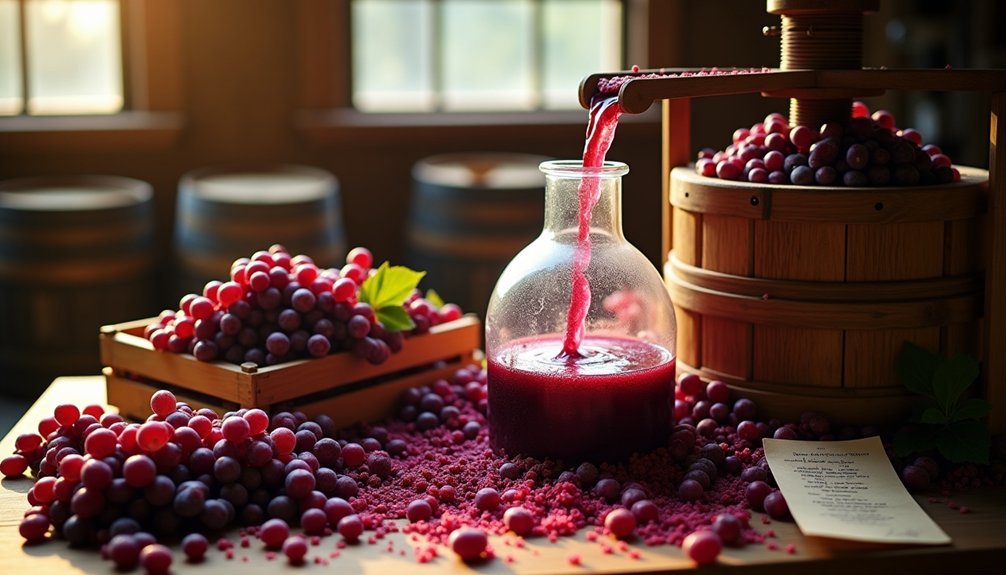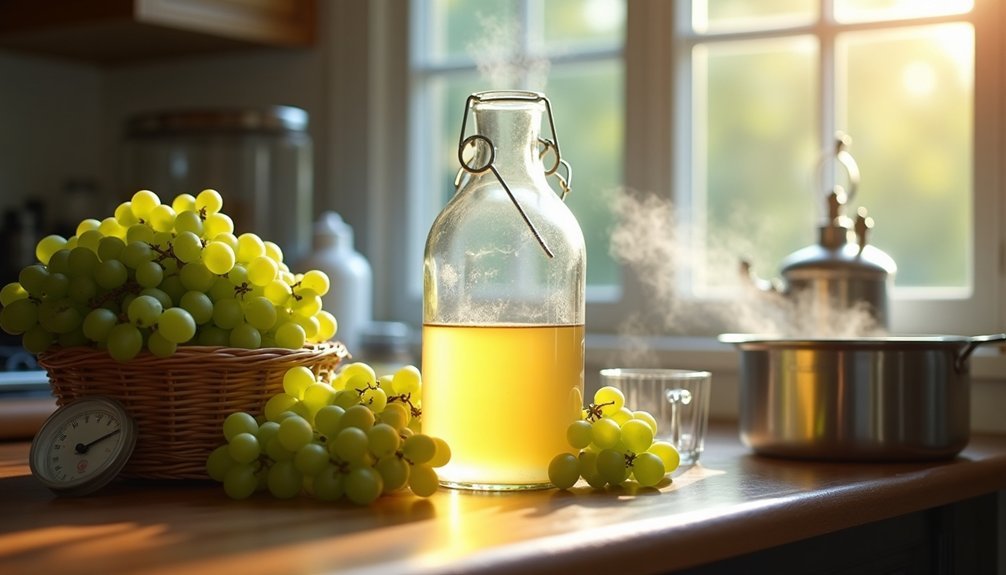I’ve been crafting apple wine in my home cellar for over a decade, and I’m convinced it’s one of the most rewarding fermentation projects for beginners and enthusiasts alike. There’s something magical about transforming a basket of orchard apples into a sophisticated beverage that rivals commercial offerings. The process isn’t complicated, but the nuances make all the difference between an ordinary drink and something truly exceptional. Let me show you how to capture autumn’s essence in a bottle.
Why You’ll Love This Drink
While many home brewers start with beer or mead, I’ve found apple wine to be uniquely rewarding for beginners and experts alike. The natural sweetness of apples creates a perfectly balanced wine that’s neither too dry nor too sweet, making it approachable even for those who don’t typically enjoy traditional grape wines.
I love how versatile this recipe is – you can adjust the sweetness level by selecting different apple varieties. The Lalvin yeasts recommended here produce clean, crisp flavors that beautifully showcase the fruit’s character. Best of all, this wine transforms dramatically with age, developing complex notes you’ll never find in commercial products.
The process itself is straightforward with minimal specialized equipment needed. You’ll enjoy both the crafting process and the delicious results.
Ingredients
Selecting the right ingredients makes all the difference in crafting exceptional apple wine. I recommend using 12 pounds of mixed apple varieties – Winesap, McIntosh, Jonathans, or crab apples work beautifully. Avoid overly sweet varieties as they won’t produce the complexity we’re after.
You’ll need 2 pounds of sugar, 80 ounces of water, and the critical additives that guarantee proper fermentation: 1.5 teaspoons of pectic enzyme to break down fruit pectin, one crushed Campden tablet to kill wild yeasts, and a teaspoon of yeast nutrient to feed our fermentation.
For yeast, I swear by either Lalvin K1-V1116 or EC-1118 wine yeast. These reliable strains convert apple sugars into alcohol efficiently while preserving delicate flavors that make homemade apple wine so special.
Directions
Now that you’ve gathered your ingredients, let’s plunge into the winemaking process. First, chop your apples into small pieces, being careful to avoid the seeds, and place them in your fermentation vessel. Add the water and a crushed Campden tablet, then cover with a sanitized cloth. For the next 12 hours, stir the mixture every 2 hours.
After this initial period, mix in the pectic enzyme and yeast nutrient. Continue stirring occasionally for another 12 hours. Then add your activated wine yeast and let the primary fermentation begin vigorously. Once this slows down, rack the liquid to a secondary vessel, press the remaining fruit, and add the sugar. Fit an airlock and allow fermentation to complete fully. Remember, patience is key—proper aging will greatly improve your apple wine’s flavor.
Substitutions and Variations
The basic apple wine recipe offers a solid foundation, but you’ll find endless opportunities to customize it to your taste preferences. Try different apple varieties to achieve unique flavor profiles – Granny Smith creates a tart wine, while Gala provides more sweetness. You can even blend varieties for complexity.
Don’t have pectic enzyme? Use the juice of one lemon instead. For a spiced apple wine, add a cinnamon stick, three cloves, and a star anise during secondary fermentation. Remove after a week to prevent overwhelming flavors.
You can substitute honey for sugar (use 1.5 lbs instead of 2 lbs) to create a delicious apple mead hybrid. If K1-V1116 yeast isn’t available, any champagne yeast works well, though fermentation characteristics may vary slightly.
Additional Things to Serve With This Drink
When enjoying a glass of homemade apple wine, complementary food pairings can enhance the tasting experience tremendously. I’ve found that aged cheeses like sharp cheddar or creamy brie create a delightful contrast with the wine’s crisp acidity.
For heartier options, try serving your apple wine with roasted pork tenderloin or duck breast—the wine’s subtle sweetness balances the rich meat flavors beautifully. If you’re hosting a casual gathering, a charcuterie board featuring smoked meats, nuts, and dried fruits works wonderfully.
For dessert pairings, I recommend apple-based pastries like tarte tatin or apple strudel, which echo the wine’s fruity notes. Vanilla custards and caramel desserts also complement the wine’s character while offering textural contrast.
Final Thoughts
Creating homemade apple wine may seem intimidating at first, but I’ve found the process to be both rewarding and surprisingly accessible for beginners. The key is selecting quality apples—a mix of varieties yields the most complex flavor profile.
I’ve learned that patience truly pays off when making apple wine. While you might be tempted to sample it early, allowing it to age for at least six months dramatically improves the taste. Don’t rush the fermentation process either; let nature work its magic.
Remember to sterilize all equipment thoroughly and follow the recipe precisely. Once you’ve mastered this basic technique, feel free to experiment with different apple combinations or even adding spices like cinnamon or cloves for a seasonal twist.



